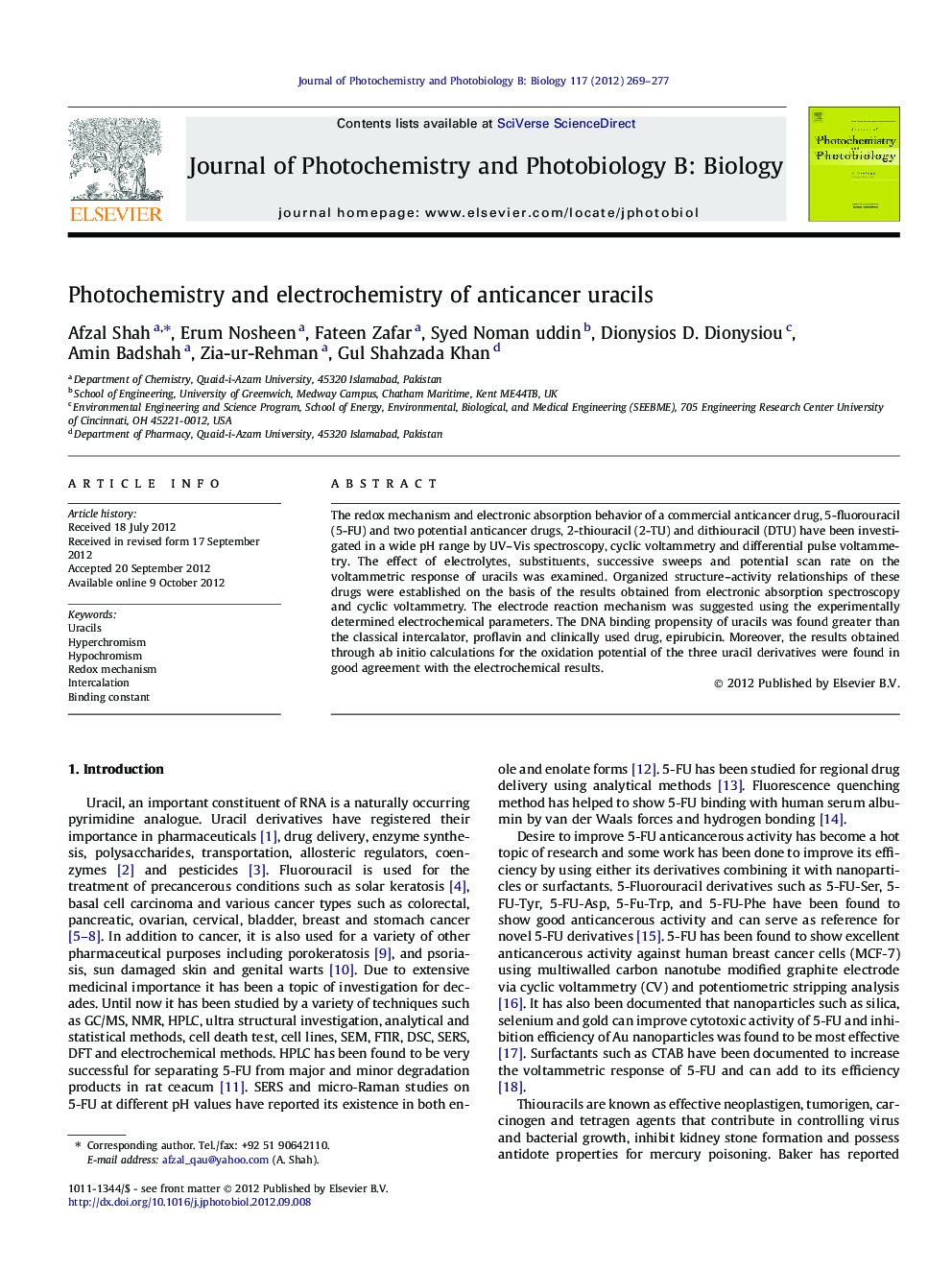| Article ID | Journal | Published Year | Pages | File Type |
|---|---|---|---|---|
| 30682 | Journal of Photochemistry and Photobiology B: Biology | 2012 | 9 Pages |
The redox mechanism and electronic absorption behavior of a commercial anticancer drug, 5-fluorouracil (5-FU) and two potential anticancer drugs, 2-thiouracil (2-TU) and dithiouracil (DTU) have been investigated in a wide pH range by UV–Vis spectroscopy, cyclic voltammetry and differential pulse voltammetry. The effect of electrolytes, substituents, successive sweeps and potential scan rate on the voltammetric response of uracils was examined. Organized structure–activity relationships of these drugs were established on the basis of the results obtained from electronic absorption spectroscopy and cyclic voltammetry. The electrode reaction mechanism was suggested using the experimentally determined electrochemical parameters. The DNA binding propensity of uracils was found greater than the classical intercalator, proflavin and clinically used drug, epirubicin. Moreover, the results obtained through ab initio calculations for the oxidation potential of the three uracil derivatives were found in good agreement with the electrochemical results.
► The photochemistry and electrochemistry of uracils were thoroughly investigated in a wide pH range. ► The results were supported by computational studies. ► Organized structure–activity relationships of uracils were established. ► The DNA binding propensity of uracils was found greater than clinically used drugs.
